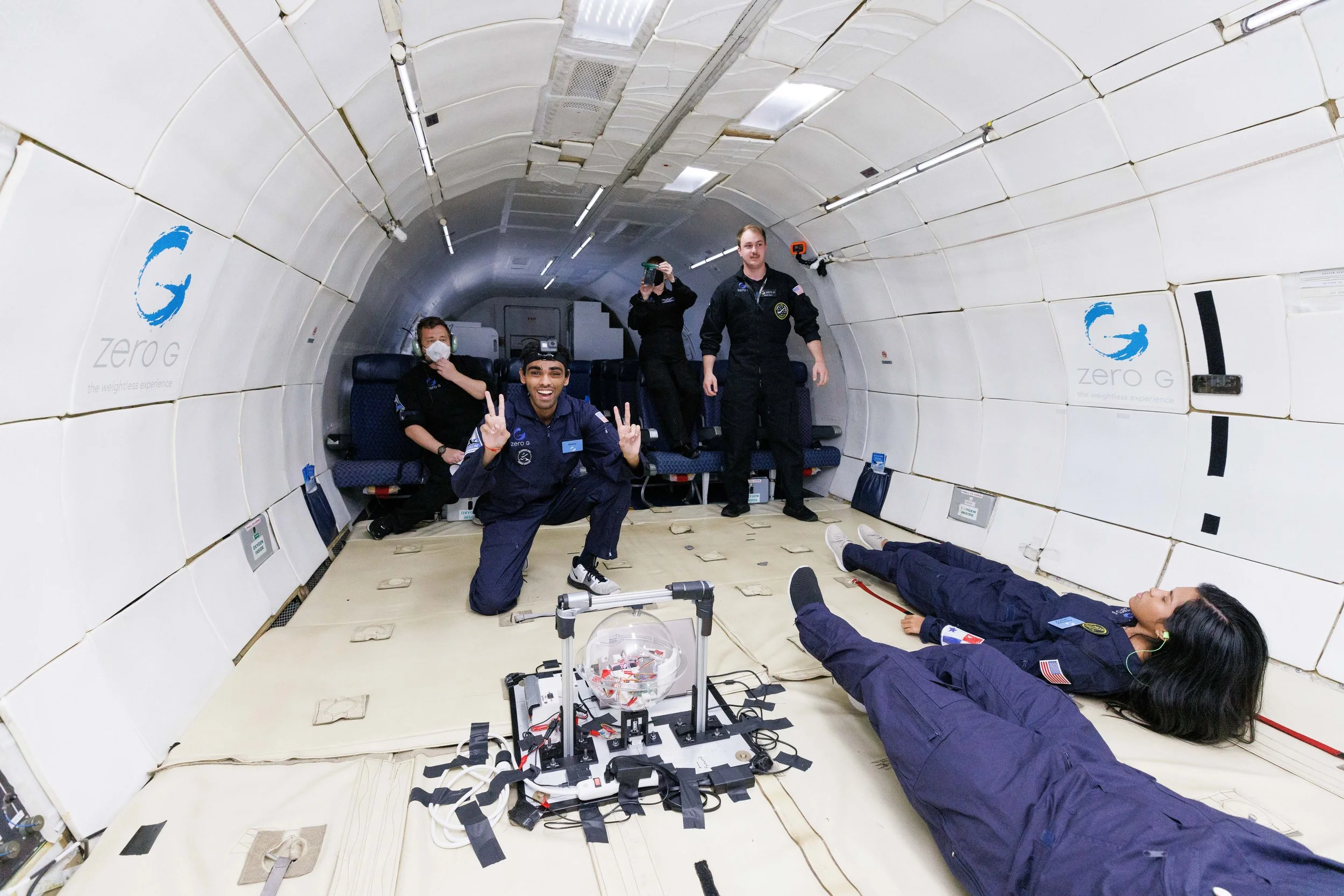Somayajulu Dhulipala floats in zero gravity. Credit: Steve Boxall / ZERO-G
Agrifuge: A rotating plant habitat for irrigation in space
SOMAYAJULU DHULIPALA, MIT STUDENTS FOR THE EXPLORATION AND DEVELOPMENT OF SPACE (SEDS)
As humanity explores deeper into space, long-duration missions will require horticulture activities to provide food, oxygen, and psychological benefits to astronauts. The Agrifuge is a rotating plant habitat that provides simulated gravity as well as a controllable irrigation system. Simulated gravity enables certain plant functions, such as circumnutation of growing vines. One of the biggest challenges in the development of in-space horticulture is irrigation, as handling fluid in microgravity is usually a challenge. On the Horizon Zero-G flight, the goal of the project was to obtain water flow rate data for different rotation rates of the plant habitat.
On previous Zero-G flights we tested a flier’s ability to manually spin a freely floating plant habitat and maintain a consistent rotation rate. On this flight, we focussed more on two other aspects:
Obtaining a correlation between the rotation rate and water flow rate in the system. The system was spun at different rotational speeds and we measured the corresponding flow-rates.
During the later part of the experiment, we manually spun the sphere manually on the motor axis and measured the corresponding water flow-rate.
Key takeaways from the flight:
Manual spinning: Spinning the experiment manually on an axis is much easier than spinning a freely floating experiment. The fixed axis prevented nutation and the system proved to have very low friction in microgravity, being able to maintain the rotation from one impulsive torque by the flier over the course of the ~20 seconds of microgravity.
Water flow rates for different rotation rates: We couldn’t observe the theoretically predicted flow for the chosen rotation rates, which could have been because of the channel’s hydrophobicity. However, we did see some flow when the plant habitat was handspun at high rotation rates.
Structural integrity and waterproofing: The structure remained intact and the 3D-printed PLA based structures sprayed with hydrophobic coating remained waterproof through the entire duration of the flight. However, we observed some leakage near the pipe joints after the flight even after they were coated with silicone. Next iterations of the project will focus on the waterproofing aspect to ensure better connectivity at joints.
Future work on the project will focus on building controlled environment agriculture (CEA) systems that extend beyond cis-lunar and lunar environments. Our work titled “Agrifuge: An Exploration Of Controlled Irrigation Methods For A Rotating Plant Habitat” has been accepted for an oral presentation at IAC 2022. We will be presenting the results from the experiment that we performed during this flight in Paris. We’ve also applied for the SGAC Space is Business Competition and SGAC OHB SE Competition where we hope to pitch our vision of developing CEA systems. During the fall of 2022, we plan to run sessions through MIT SEDS for undergrads to discuss designing for Zero-G. We hope to use the experience from the flight to motivate more undergrads to join the MIT SEDS microgravity payload program.
Project Contributors: Somayajulu Dhulipala, Manwei Chan
Learn More
Flight Media
Somayajulu Dhipala poses in front of Agrifuge. Credit: Steve Boxall / ZERO-G



